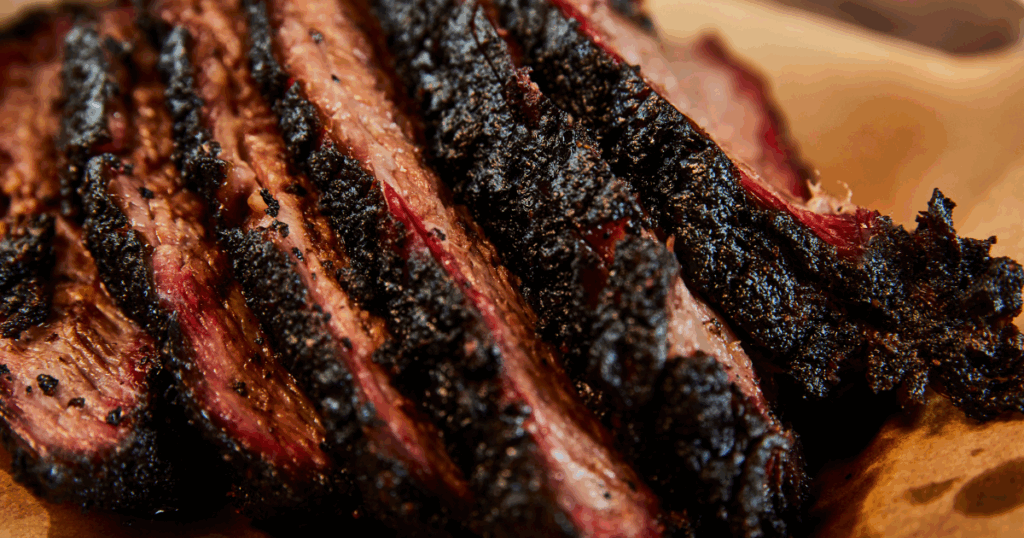When it comes to authentic BBQ in Las Vegas, few names carry the weight and reputation of John Mull’s Road Kill Grill. Known for our legendary smoked brisket, fall-off-the-bone ribs, and juicy pulled pork, we believe that smoking meat is more than a cooking method—it’s an art form. It takes time, patience, precision, and a little bit of soul.
Whether you’re a backyard BBQ enthusiast or catering your next big event, understanding the fundamentals of smoking will transform your results. In this guide, we’re sharing our expert smoking techniques straight from the pitmasters at John Mull’s. Let’s dive into the flavors, textures, and science behind perfect smoked meats.
Why Smoking Meat is an Art
Smoking is a slow-cooking technique that uses low temperatures and flavorful wood smoke to enhance meat’s taste, texture, and tenderness. It’s not a quick fix—it’s a process built on tradition, technique, and timing. At John Mull’s, we take pride in handcrafting every bite using the methods we’ve perfected over decades.

Choosing the Right Wood: The Foundation of Flavor
Different types of wood chips or chunks influence the final flavor profile of smoked meats. Selecting the right wood is crucial to achieving the taste you’re aiming for.
Popular Woods We Use at John Mull’s:
- Oak: A strong, versatile smoke perfect for brisket and beef ribs.
- Hickory: Bold and hearty, it brings out the best in pork and bacon.
- Mesquite: Intense and earthy—great for bold cuts, but use sparingly.
- Applewood: Mild and sweet; excellent for chicken and pork.
- Cherrywood: Slightly fruity; pairs well with ribs and poultry.
Pro Tip: Mix woods to create a custom flavor profile. Oak and cherry make a great balanced smoke for both pork and beef.
Preparing the Meat: Trim, Season, Rest
Great BBQ starts with great preparation. Before the meat even hits the smoker, we follow a careful prepping routine to maximize flavor and tenderness.
1. Trimming
Remove excess fat, silverskin, or membrane, but don’t go overboard. Fat adds moisture, so leave enough to protect the meat during the long smoking process.
2. Seasoning
Use a dry rub or marinade to build your flavor base. At John Mull’s, our house rub includes a balanced blend of:
- Paprika
- Brown sugar
- Garlic powder
- Onion powder
- Black pepper
- Cayenne (just a dash!)
Let your meat sit for at least 1 hour, or even better—overnight in the fridge. This helps the flavors penetrate and forms a bark-worthy crust during the smoke.
Temperature Control: The Key to Consistency
Smoking meat is a test of patience and consistency. Keeping a steady temperature ensures even cooking and the development of a smoke ring—a pink layer just below the surface that’s a badge of honor for pitmasters.
Ideal Smoking Range:
225°F to 250°F
This range is perfect for breaking down collagen in tougher cuts without drying them out.
Common Pitmaster Tips:
- Avoid opening the smoker frequently—it causes heat loss.
- Use a digital thermometer to monitor both grill and internal meat temps.
- Add wood and charcoal gradually to keep the smoke clean and consistent.
Low and Slow: The Signature Technique
At John Mull’s Road Kill Grill, we live by the motto: Low and Slow is the Only Way to Go.
Smoking Time Guide (approximate):
- Brisket: 10–14 hours
- Pork Shoulder: 8–10 hours
- Ribs: 5–6 hours
- Chicken: 3–4 hours
Time will vary depending on size and thickness. Always cook to temperature, not time. Internal temp goals:
- Brisket: 200–205°F
- Pork Shoulder: 195–205°F
- Chicken: 165°F (white meat), 175°F (dark meat)
Wrapping for Moisture Retention
To prevent meat from drying out during long cooks, many BBQ pros—including us—employ “The Texas Crutch.”
When to Wrap:
Wrap your meat in butcher paper or aluminum foil once it reaches 165°F internal temperature. This:
- Locks in moisture
- Prevents the bark from getting too dark
- Speeds up the final cooking phase
Butcher paper allows the meat to breathe slightly while maintaining texture. Foil traps in more steam, making for ultra-juicy results.
Resting: The Final Step Most Skip
One of the most underrated techniques in smoking is resting the meat after it’s done. This step is crucial for tenderness and juiciness.
Why Resting Matters:
Resting allows the juices to redistribute throughout the meat. If you cut it too soon, all those precious juices spill out instead of staying in every bite.

